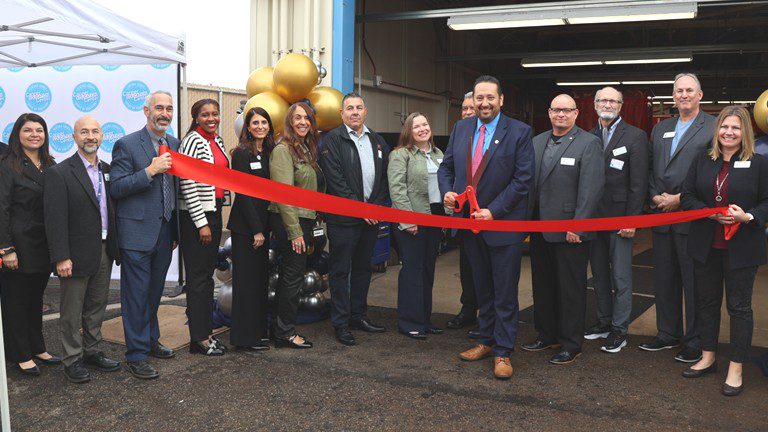If you’ve seen a police officer, sheriff’s deputy, firefighter, or paramedic in Santa Barbara or San Luis Obispo counties, chances are they received their instruction and honed their skills at Allan Hancock College’s Public Safety Training Complex.
“Allan Hancock College and the Allan Hancock College Public Safety Training Complex are making a difference in the community,” said Santa Barbara County Sheriff’s Lt. Juan Camarena, an adjunct Police Academy instructor who serves as commander of the Isla Vista Sheriff’s Station and a SWAT team manager. “It’s a great facility with excellent instructors and dedicated staff.”

The Public Safety Training Complex illustrates how the eight colleges in the South Central Coast Regional Consortium are collaborating with public agencies and private business in providing the skills and education necessary for area residents to find good-paying careers.
Funding from the Strong Workforce Program is helping to make it possible.
“The equipment that we have through the Strong Workforce Program is critical,” said Director of Public Safety Training David Whitman, who pointed to the recent purchase of a Pump Pod that was secured with more than $91,000 in Strong Workforce Program funds. The Pump Pod allows cadets and firefighters to train in full-flow, high-pressure, firehose operations and its innovative design allows the apparatus to continually pump and recirculate the water it holds, saving millions of gallons of water annually.
The Public Safety Training Complex is housed at Allan Hancock College’s Lompoc Valley Center. The state-of-the-art facility serves current and future fire, law enforcement, emergency medical services, and environmental health and safety personnel.
“When one of our students applies for a firefighter job and they put down on their application that they went to the Allan Hancock College Fire Academy, that means something,” said Leonard Champion, the recently-retired Chief of the Santa Maria Fire Department, where more than half of firefighters are Academy graduates. “We provide the highest level of training here and we are providing our students with the knowledge and tactics to be successful anywhere.”
The 17 ½-week Fire Academy begins with an overview of the profession, expectations, and lessons about working as a team. Training runs the gamut: how to wear and put on breathing apparatus and how to do it quickly; how to extricate someone from a vehicle; how to lay hose; how to put out a fire; and how to rescue someone from a smoke-filled room. Classes are held daily from 9 a.m. to 6 p.m., in addition to a mandatory morning physical conditioning course.
Camarena said virtually every law enforcement officer in Santa Barbara and San Luis Obispo counties are products of the Training Complex, which offers two academies each year for new recruits who will be working patrol and two academies each year for new recruits who will be working at detention centers. In addition, more than 500 officers attend the complex each year to brush up on their skills, and an Emergency Vehicle Operation Course offers a site for police from throughout Southern California to receive 40 hours of training required by the California Commission on Peace Officer Standards and Training.
“We wouldn’t be able to do what we’re doing without Allan Hancock College and their Public Safety Training Complex,” said Eric E. Smith, Chief of Police for the California Department of State Hospitals (DSH) Office of Protective Services (OPS) Academy.




